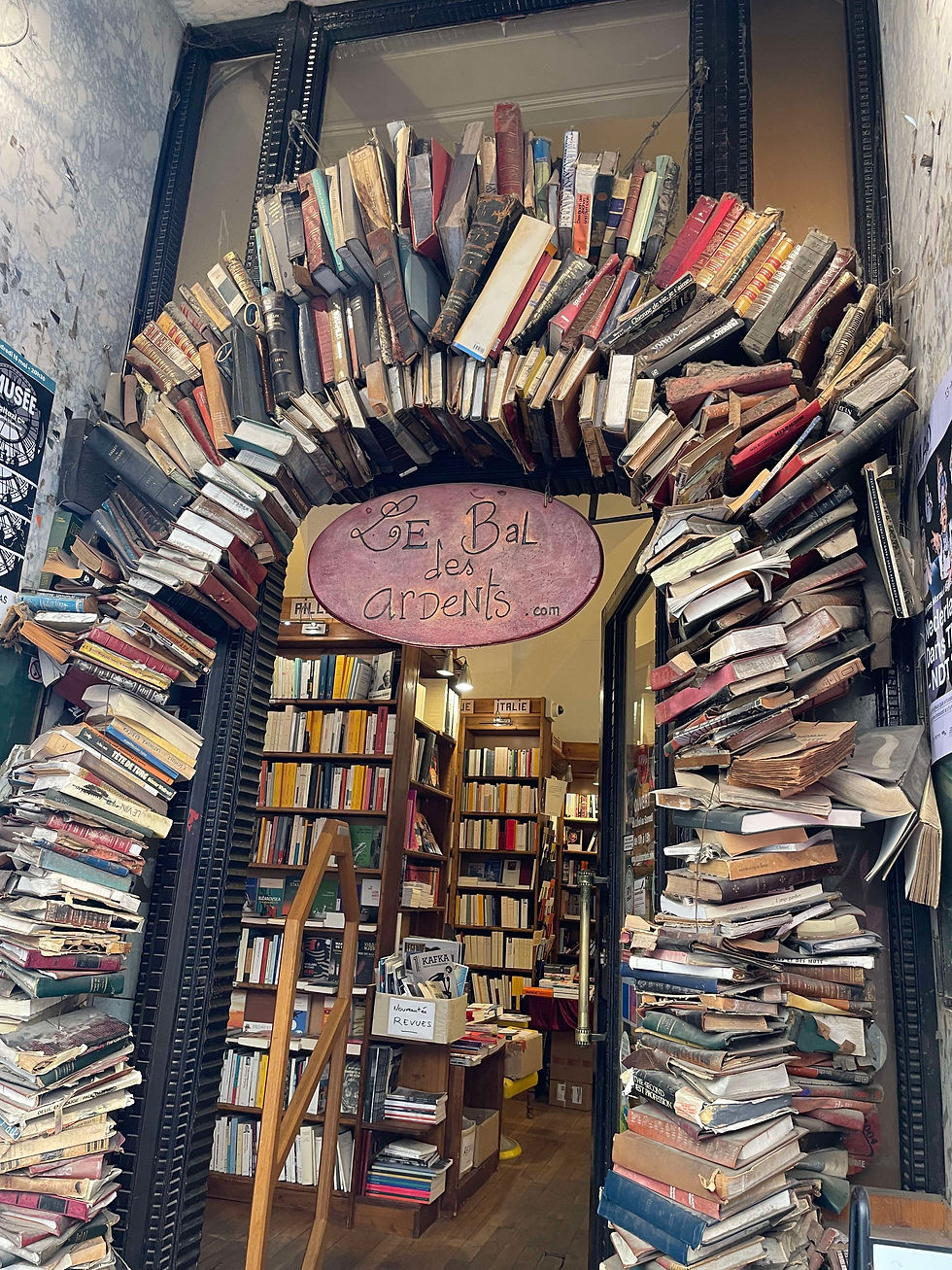A Grand Promenade
- Autumn Mayer
- Feb 27
- 3 min read
On Sunday, I decided to go out to a farmer's market beside the River Saône and ended up having a grand adventure. The Marché Saint-Antoine was composed of all kinds of fresh foods: cheese, fruits, vegetables, meats, bread, and more. I didn't end up getting anything, as it was mostly ingredients, not portable snacks. Since I didn't want to have come such a long way for a five-minute walk through a market, I continued on toward the Musée des Beaux-Arts. Through there was a line, I was able to go right in because of my carte culture, which grants me free access to many of Lyon's museums.
After the museum, I turned south along the Presqu'île and walked along the river. Along the way, I stumbled across a small market selling used books and vintage postcards. I bought one from Strasbourg and one from Mont-Saint-Michel, not wanting any from places I haven't been (or won't soon visit). Then, I walked through an art market before turning into Vieux Lyon.
I was in search of either gaufres (waffles) or crêpes. There are usually a lot of little stands selling gaufres and crêpes on the main street of Vieux Lyon, but they were all closed; I think 11:15 was a little too early for them to be open. I reached the end of the quartier and decided to walk the street again to see if anything had opened. At almost the other end of the quartier, I found a place that was open and ordered a gaufre crème de marron (chestnut cream, one of my favorites). My delicious street waffle finished, I started up Fourvière Hill toward the Jardin des Curiosités. It was about 20-odd minutes to get there by walking or by taking the funicular, so I decided to walk to see what else I could discover along the way. While the hill wasn't exactly fun, the view as I wound upwards was incredible. I came across the Jardin du Belvédère, which was a tiny, gated garden with some flowerbeds and benches overlooking the city. There was music playing somewhere down below, the daffodils were in bloom, and the sun was shining. (The only downside was the tall chain-link fence, there presumably as a safety precaution, in the way of the perfect picture.) I eventually made it to the Jardin des Curiosités, which had an even more astonishing view, this time uninterrupted. I looked out over the city for a while and took pictures, though I didn't sit because of the popular tourist spot's crowd. I walked the rest of the way home because it was faster than waiting for the irregular Sunday buses.
Spurred on by the day's sense of adventure, I went out again that evening, this time to the Basilique Notre-Dame de Fourvière for mass. I arrived about 30 minutes early because I wasn't sure how full the basilica would get for mass. The basilica's atmosphere was peaceful as tourists snapped photos and mass-goers began to find their seats. The pews didn't fill up until about two minutes before 5:30, when mass was set to start. I could hear the lectors and priest perfectly and understand most of what they were saying, though I was sitting a bit too far back to really see. The songs and responsorials were harder to understand, unless it was a song in the song book, in which case I could follow the lyrics.
Some other differences between mass in France and in the United States:
Mass was about an hour and 20 minutes. I should have anticipated that the French do everything at a leisurely pace, including mass. There were also two readings, which contributed. I have heard elsewhere that it's usually an hour, but maybe Fourvière was just longer that night.
The responses were mostly sung, including the responses to the petitions, which also added to the overall length.
There were a variety of ages present: older, younger, middle-aged, and families.
I wasn't sure what to expect for the sign of peace--I was a little worried it would be faire la bise (the double cheek kiss)--but it turned out to be doing prayer hands, nodding at people, and saying "la paix du Christ."
If people couldn't kneel, they stood, rather than staying seated.
There was a credit card reader in the donation basket so you didn't need to have cash, though most people seemed to give €1 or €2 coins. (Fun fact if you didn't know: there are no €1 bills, but there are both €1 and €2 coins. The smallest paper bill is €5.)
After mass, I had some fun taking pictures of the basilica lit up for the night, as well as the city spread out down below the hill. Then, I headed home for dinner and some well-deserved rest.
*As always, you can click on the photos to expand them to their proper sizes for a better view.
.jpg)

















You are certainly becoming a master adventurer! Thanks for checking out mass. It was really interesting to hear of the similarities and differences. What an interesting way to give the sign of piece.